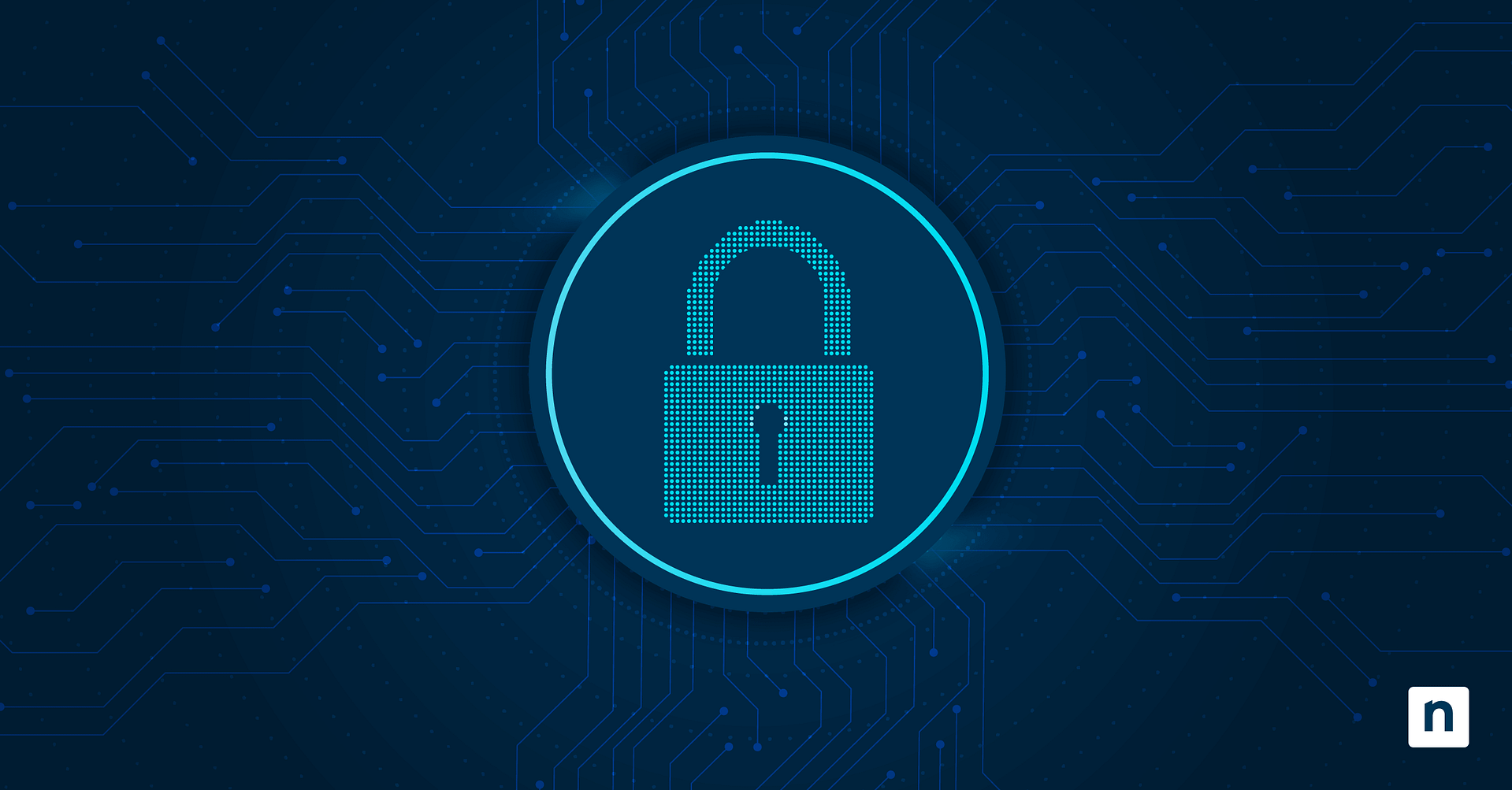EPP vs EDR: which option is best for you? Endpoint Protection Platforms (EPP) and Endpoint Detection and Response (EDR) offer distinct capabilities for addressing escalating cybersecurity threats. While EPP emphasizes prevention, blocking known threats before they execute, EDR focuses on detecting and responding to advanced attacks that bypass initial defenses.
Selecting the right solution depends on your organization’s unique risk profile and security maturity.
What is EPP?
An endpoint protection platform (EPP) provides comprehensive security for endpoint devices through multiple protection technologies integrated into a single solution. When exploring what is an endpoint protection platform, you’ll find these solutions focus primarily on preventing known threats before they can execute on your systems. EPP solutions typically combine traditional antivirus capabilities with more advanced preventative technologies like application control, device control and exploit prevention.
Key aspects of EPP include:
- Comprehensive security: Integrates multiple security technologies into a single solution.
- Threat prevention: Focuses on preventing known threats before execution.
- Advanced technologies: Combines traditional antivirus with application control, device control and exploit prevention.
- Signature-based detection: Uses signature-based methods and behavioral analysis.
- Evolved capabilities: Includes URL filtering, data loss prevention and vulnerability assessment.
- First line of defense: Acts as a strong initial defense against common malware and viruses.
What is EDR?
Endpoint Detection and Response solutions focus on monitoring endpoint activities to detect, investigate and respond to advanced threats that have evaded preventative measures. Unlike EPP solutions that primarily block known threats, EDR systems continuously collect and analyze endpoint data to identify suspicious behaviors that might indicate an ongoing attack. This enables security teams to detect sophisticated threats that don’t match known signatures or patterns.
Key aspects of EDR include:
- Advanced threat focus: Detects and responds to threats that bypass preventative measures.
- Continuous monitoring: Continuously collects and analyzes endpoint data.
- Behavioral analysis: Identifies suspicious behaviors indicating an ongoing attack.
- Deep visibility: Monitors processes, network connections, file system changes and registry modifications.
- Advanced analysis: Uses behavioral analytics and machine learning.
- Incident response: Provides tools to contain, investigate and remediate affected systems.
EPP vs. EDR: Comparing strengths
The core distinction between EPP vs. EDR lies in their approach: prevention versus detection and response. EPP focuses on preventing known threats through signature-based detection and preventative controls, while EDR emphasizes continuous monitoring, detection of suspicious behaviors and response capabilities for threats that evade initial defenses.
Both solutions serve important but distinct functions within a comprehensive security strategy.
Prevention vs. detection
EPP solutions excel at preventing known threats through signature matching, application control and exploit prevention techniques. Proactive prevention blocks malicious files and activities before execution, creating an effective barrier against common malware and viruses. This proactive protection significantly reduces the attack surface and prevents many threats from gaining a foothold in your environment.
EDR solutions focus on detecting threats that have bypassed preventative controls through continuous monitoring and behavioral analysis. By collecting and analyzing detailed telemetry data from endpoints, EDR can identify subtle indicators of compromise that might otherwise go unnoticed. This detection capability proves particularly valuable against advanced persistent threats, fileless malware, and zero-day exploits that traditional preventative measures might miss.
Response capabilities
Response capabilities represent a significant difference when comparing EPP vs. EDR solutions. EPP platforms typically offer limited response options, mainly focused on quarantining detected malware and blocking known malicious activities. Their response mechanisms operate automatically based on predefined rules and signatures, with minimal options for customization or manual intervention.
EDR solutions provide substantially more robust response capabilities designed for security professionals to investigate and remediate sophisticated threats. These advanced tools include detailed process trees, network connection analysis, and file execution history that enable thorough incident investigation. Security teams can use EDR platforms to isolate compromised endpoints, terminate malicious processes, delete persistence mechanisms, and roll back system changes.
Integration with IT environments
EPP solutions typically integrate seamlessly with existing IT infrastructure through lightweight agents that consume minimal system resources. Their deployment and management processes follow familiar patterns similar to traditional antivirus solutions, making them relatively straightforward to implement across organizations of various sizes. Most EPP platforms offer centralized management consoles that simplify policy configuration, deployment, and monitoring.
EDR solutions require more substantial integration considerations due to their continuous data collection and analysis requirements.
Consider the following factors when planning EDR integration:
- Agent resource consumption: EDR agents typically consume more system resources than EPP agents.
- Data storage requirements: Data storage needs can be substantial, especially for organizations with many endpoints.
- Skillset requirements: Security teams need specialized skills to effectively utilize EDR capabilities.
- SIEM integration: Integration with security information and event management (SIEM) systems may require additional configuration.
- Network bandwidth: Network bandwidth must accommodate continuous telemetry data transmission.
Choosing between EDR and EPP solutions
Selecting the right endpoint management requires weighing your organization’s risk profile, compliance requirements and available resources. Many organizations find that a hybrid approach combining both technologies provides the most comprehensive protection against today’s diverse threat landscape.
Assessing organizational needs
When evaluating your security requirements, consider your organization’s specific threat exposure and compliance obligations. Industries handling sensitive data, such as healthcare, finance, and government, typically face more sophisticated threats and stricter compliance requirements that may need the additional security that EDR provides. Assess your existing security infrastructure to identify gaps that either solution might address.
Your organization’s security maturity level significantly influences which solution will provide the most value. Companies with limited security resources and expertise often benefit from the straightforward protection of EPP solutions, which require minimal configuration and maintenance.
Budget and resource considerations
Financial constraints inevitably influence security technology decisions, with EDR solutions typically requiring higher investment than EPP platforms. Beyond initial licensing costs, consider the total cost of ownership, including implementation, training, ongoing management and potential infrastructure upgrades. EDR solutions generally demand more resources across all these dimensions compared to more straightforward EPP implementations.
There are several strategies to address this challenge:
- Security analyst hiring: Bring on additional staff with EDR expertise to manage alerts and investigations.
- Staff training: Upskill existing IT or security personnel in EDR investigation and response techniques.
- Managed service engagement: Partner with managed security service providers for ongoing EDR monitoring and support.
- Automation implementation: Leverage automation to handle routine investigation and response tasks, reducing manual workload.
- Managed EDR adoption: Use managed EDR services that provide expert monitoring, analysis, and incident response as part of the solution.
Building a layered endpoint security strategy
Comprehensive endpoint security often combines elements of both EPP and EDR technologies to create defense-in-depth protection. This layered strategy leverages EPP’s preventative strengths to block known threats while utilizing EDR’s detection and response capabilities to address more sophisticated attacks.
Modern security vendors offer integrated solutions that combine both capabilities on a single platform, sometimes referred to as Extended Detection and Response (XDR).
Your endpoint security strategy should align with broader organizational security initiatives and integrate with other security controls. Effective endpoint protection works best when aligned with your network security, identity management, vulnerability management and security awareness training.
Your smarter endpoint security starts here
Protecting your endpoints has become a top priority as attackers increasingly target devices across your environment. Relying on a single layer of defense is no longer sufficient — comprehensive endpoint security requires both prevention and rapid response.
As you continue to face evolving cybersecurity challenges, the importance of endpoint protection cannot be overstated. NinjaOne complements EDR solutions with remote monitoring and management tools, enabling more comprehensive management of endpoints and EDR solutions. Try it now for free.








